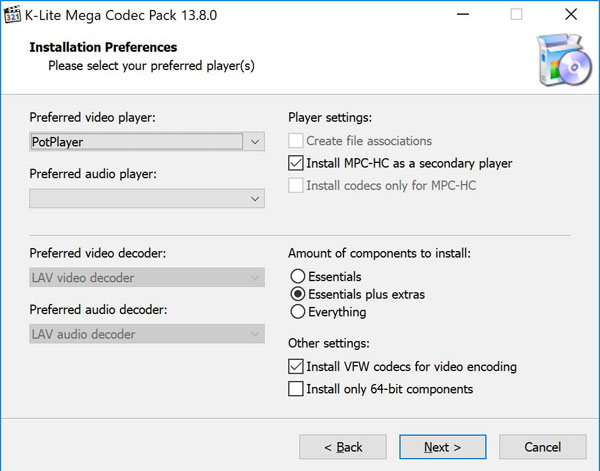
Step 3: Go back to Windows Media Player and click the Close button on the original codec notice, and then click the red X to exit Windows Media Player. The second solution is to use the Windows Media Player auto-update function. The first solution is updating the codecs manually. Updating Windows Media Player codecs is simple and straightforward, and there are a lot of ways to do so.
#Windows video codec install#
It can be annoying to say the least, and this situation users have to either find and install additional codecs for the formats that they are trying to view, or just use an alternative media player. However, the simple and basic experience that is appreciated by many users turns upside down, due to the fact that some formats are not supported by Windows Media Player.
#Windows video codec software#
It has all the basics that a standard media playing software has, and it can play videos in common formats that can be opened effortlessly. For decades, Windows Media Player has been the primary media player on the Windows platform. If you are a Windows user, Windows Media Player should not be something new.
#Windows video codec update#
Solution 1: Update Windows Media Player Codec manually.If you cannot find the specific codecs you are looking for, we will also introduce an alternative and universal video player that has support for more video codecs and formats. In this guide, we will look at Windows Media Player codecs, and how you can update them if you have outdated ones. Newer ones are being released and they are grouped together under a variety of umbrellas. Changes to these codecs are always happening as technology advances. There are also transformative codecs which cut the video material into smaller chunks before they have been compressed.


There are lossy codecs, which lose a small amount of information, although they compress material into a much smaller formats which is ideal for internet sharing. There are lossless video codecs, which always reproduce videos exactly as they were without any loss in quality. There are various types of codecs available for use. Codecs can also be used in a physical piece of hardware, like your camera, turning incoming video and audio into a digital format. Moreover, codecs are computer codes that perform their function whenever the video files are requested or called by a piece of software. Therefore the codec exists for that purpose, because it encodes and compresses the data for storage or sending, then decompresses for playback or editing.

So what does that mean for videos? Quite simply, video files can be very large, and they need a way to make them smaller. The word codec is the meaning of two words: coder and decoder.


 0 kommentar(er)
0 kommentar(er)
